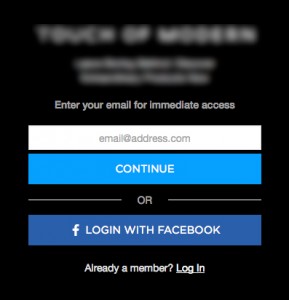— January 16, 2019
Did you sell your products in just one country this year? That’s good, but if you want real growth in 2019 and beyond, you must sell your products globally. Walmart’s acquisition of FlipKart has raised the bar, highlighting once again the importance of online retailers going global.
Of course, we get it. Selling your products globally sounds exciting … but also a tad overwhelming. No longer are you confined to the market you know inside out, you have to understand and finesse lots of new ones. We’ve got you covered. In this article, we take a look at the top 4 tips for selling your eCommerce products globally in 2019.
Last month, I posted my top tips for selling your eCommerce products globally this year. If you liked those, here is some bonus advice to help you succeed.
Bonus Tip #1: Speak the Right Language
We spend a ton of time thinking about the copy on our websites. How do my headlines sound? Did I write as if I was speaking to one person? What emotion does this convey? Did I use enough power words? But, in the end, an all too often overlooked copy mistake is one that should be obvious — simply, “Am I speaking the right language?”
If you open a store to a German audience, for example, it’s important that it’s in their native tongue. Don’t worry — it doesn’t matter if you can’t speak German, Italian, or even French. Many eCommerce platform plans allow you to switch the language of your landing page and the rest of your store to suit different regions and countries. Many consumers only buy from websites that are in their native tongue.
As good as Shopify Plus is at matching languages to countries and regions, it’s a good idea to hire a fluent speaker of different languages to proofread your website. Don’t forget to convert your emails into different languages, too, while introducing multilingual chatbots will give your store a huge boost. Chatbots are a great way of engaging with your customers, answering their questions, recommending them products, and overall nudging them in the direction of a sale.
Bonus Tip #2: Try Dropshipping
One of your biggest concerns right now might center around inventory. In other words, sourcing, stocking, and shipping. After all, if you’re planning to go global, sourcing, stocking and shipping products are going to become a bigger deal than ever before.
To take a load off, why not experiment with a low-investment idea such as drop shipping? This is when you run an eCommerce store but rely on a third party seller to stop and ship your products for you. What about print-on-demand (POD)? As long as you play your cards right and learn the success factors of POD, you can sell a customized product without ever having your hands in the inventory. You never touch or see the products – you just make the sales and collect the checks. Victory!
Bonus Tip #3: Enable International Payment Methods
Difficult checkout procedures are one of the prime reasons customers abandon carts. When you go global, it’s a smart idea to add various international payment methods so that it’s easy for a consumer to make a payment, regardless of where they are in the world. Remember, your customers want a super easy buying process — the fewer obstacles that are in their way, the higher your conversions will be. You need your audience to trust you.
To this end, take your time to find out what payment methods are preferred in which countries. Often, you’ll find that most customers prefer to pay in a currency familiar to them, but you might also want to experiment with online payment methods such as Stripe and PayPal. Whichever payment providers you go with, pick ones that have excellent reputations for security.
It’s also a good idea to add a currency conversion feature so that your shoppers know exactly how much they’re paying. Consider adding cryptocurrency payment methods, too. While the crypto boom of 2017 has slowed a bit, digital coins like Bitcoin open you up to new customers worldwide and makes your store appear to be at the forefront of innovative new technologies and solutions. This is never a bad thing.
Bonus Tip #4: Choose the Right Markets
Going global doesn’t mean that you now have to sell to absolutely every single market. Some could be a complete waste of your time. Instead, it’s key that you pick the right markets that will be receptive to your store’s products.
First, take a look at your existing internal data. Where are your main customers coming from? Which countries and regions? What are your traffic sources? Then, use a free eCommerce audit tool like Benchmark Hero to help you make sure your business, marketing, technical, and online retail features are optimized. Another tool worth using is PayPal’s passport site. This is home to lots of info about global buying trends for different countries. Research where your competitors are already selling similar products like yours. Which countries are popular with these products?
Conclusion
Hopefully, expanding your eCommerce store so that you sell your products globally is still exciting – but much less overwhelming. Make your life easier by considering drop shipping, make their life easier by adding international payment methods, keep them on your website by adopting multilingual chatbots… and, oh, don’t forget to pick the right markets first. That’s kinda important.
Digital & Social Articles on Business 2 Community
(25)








